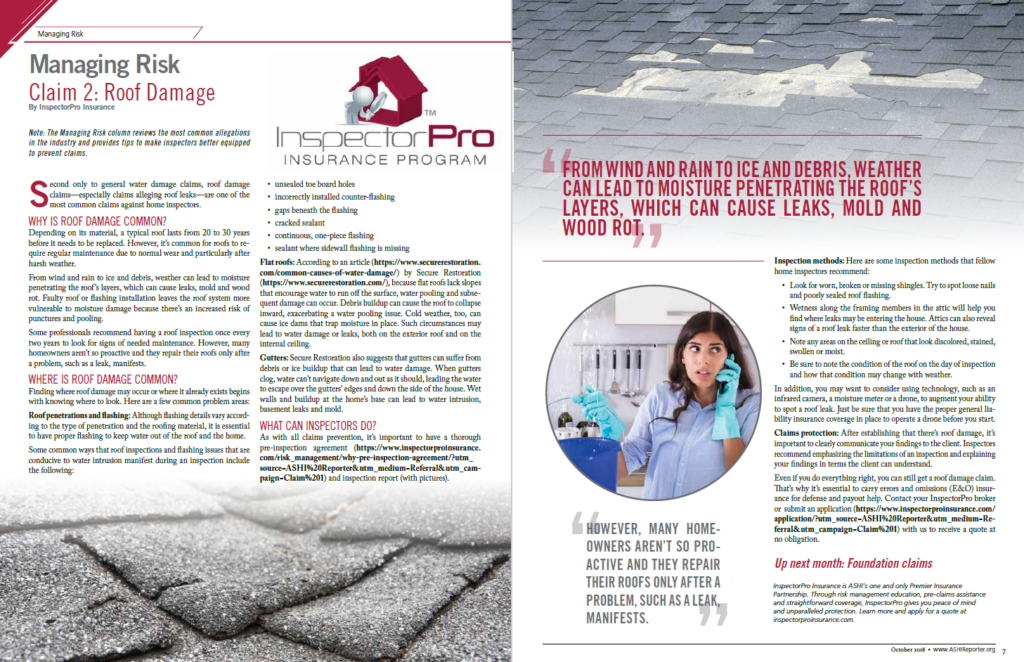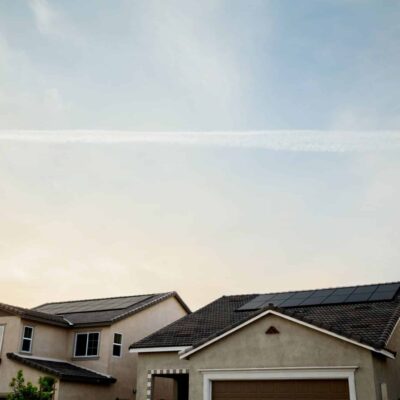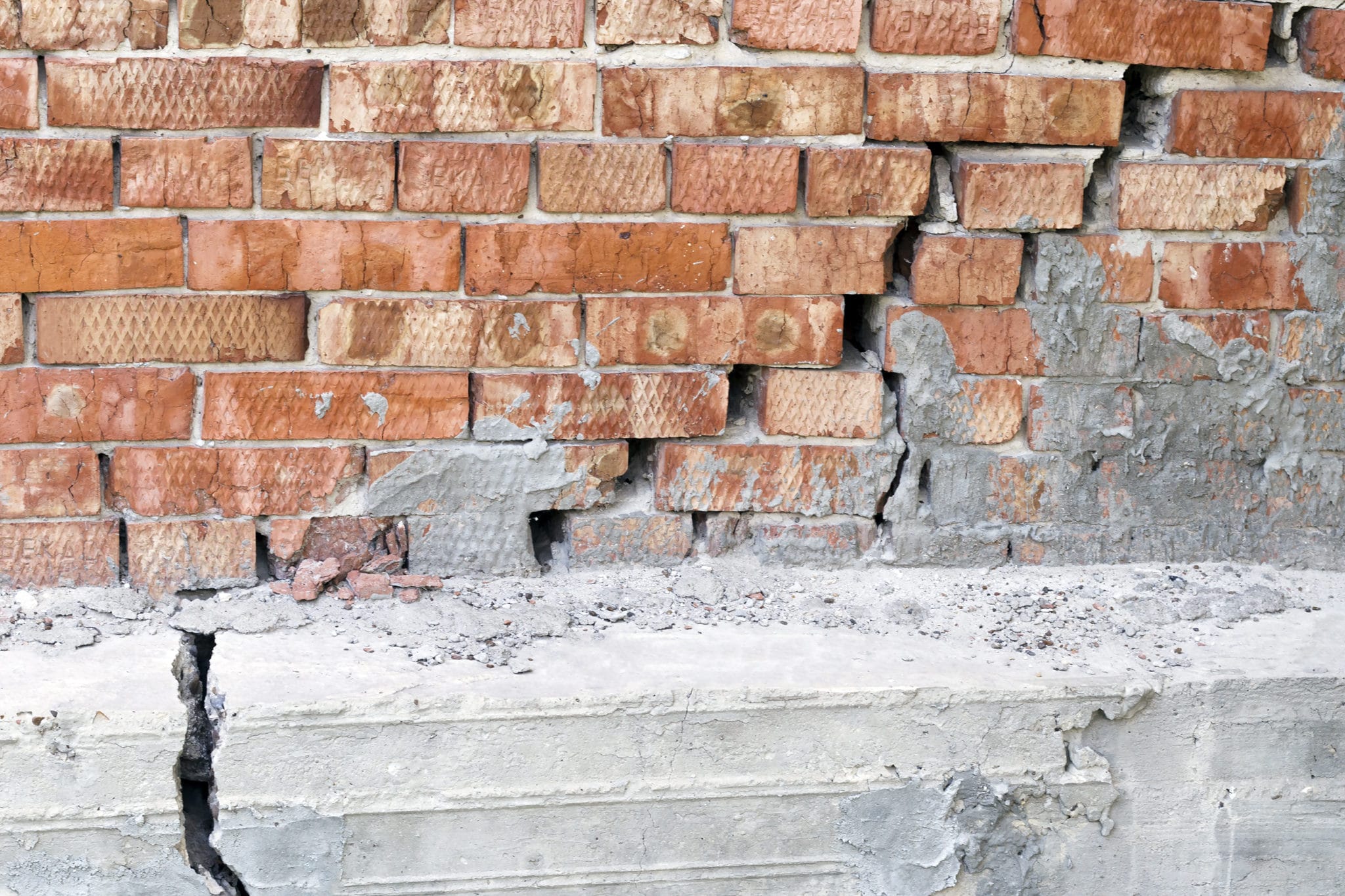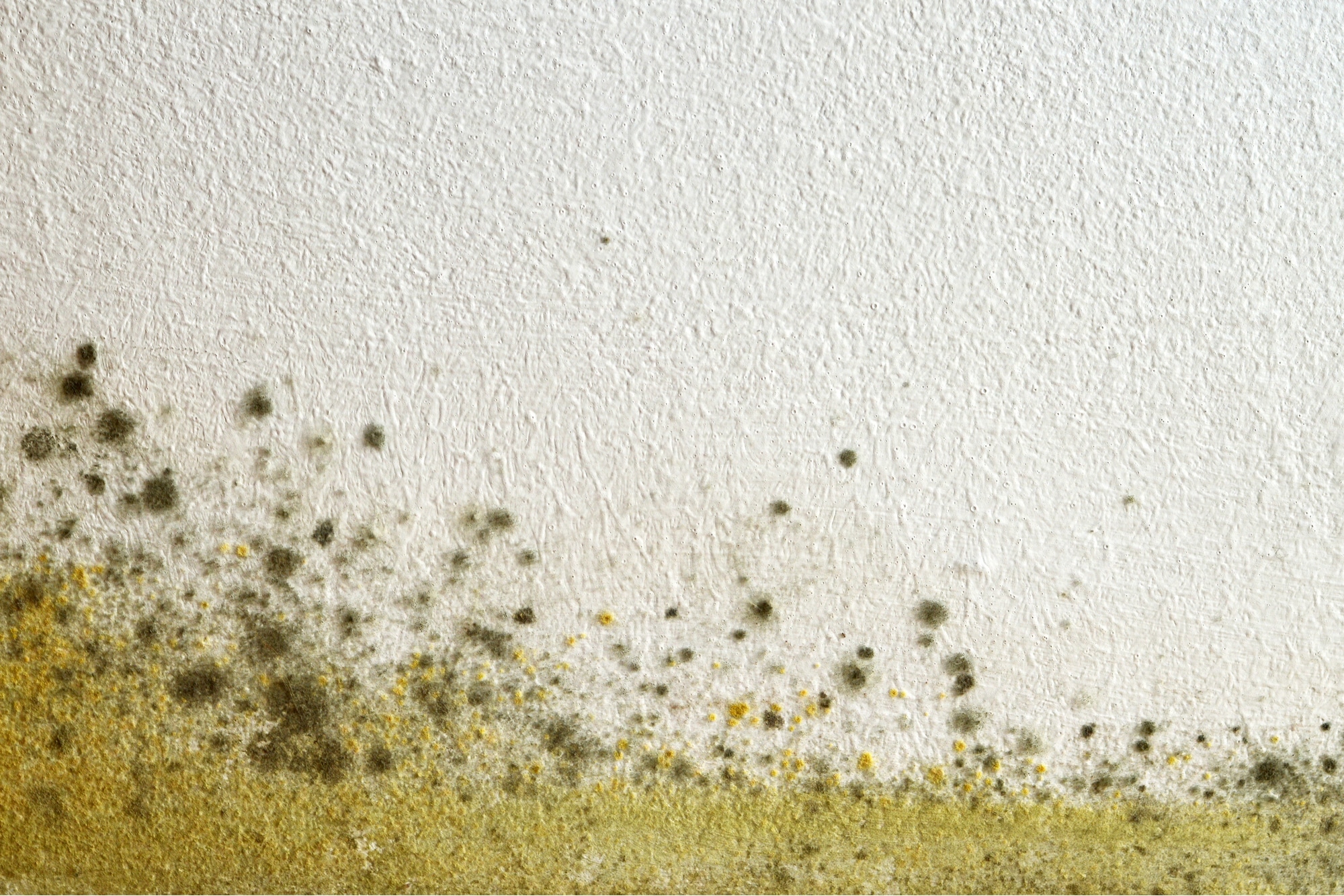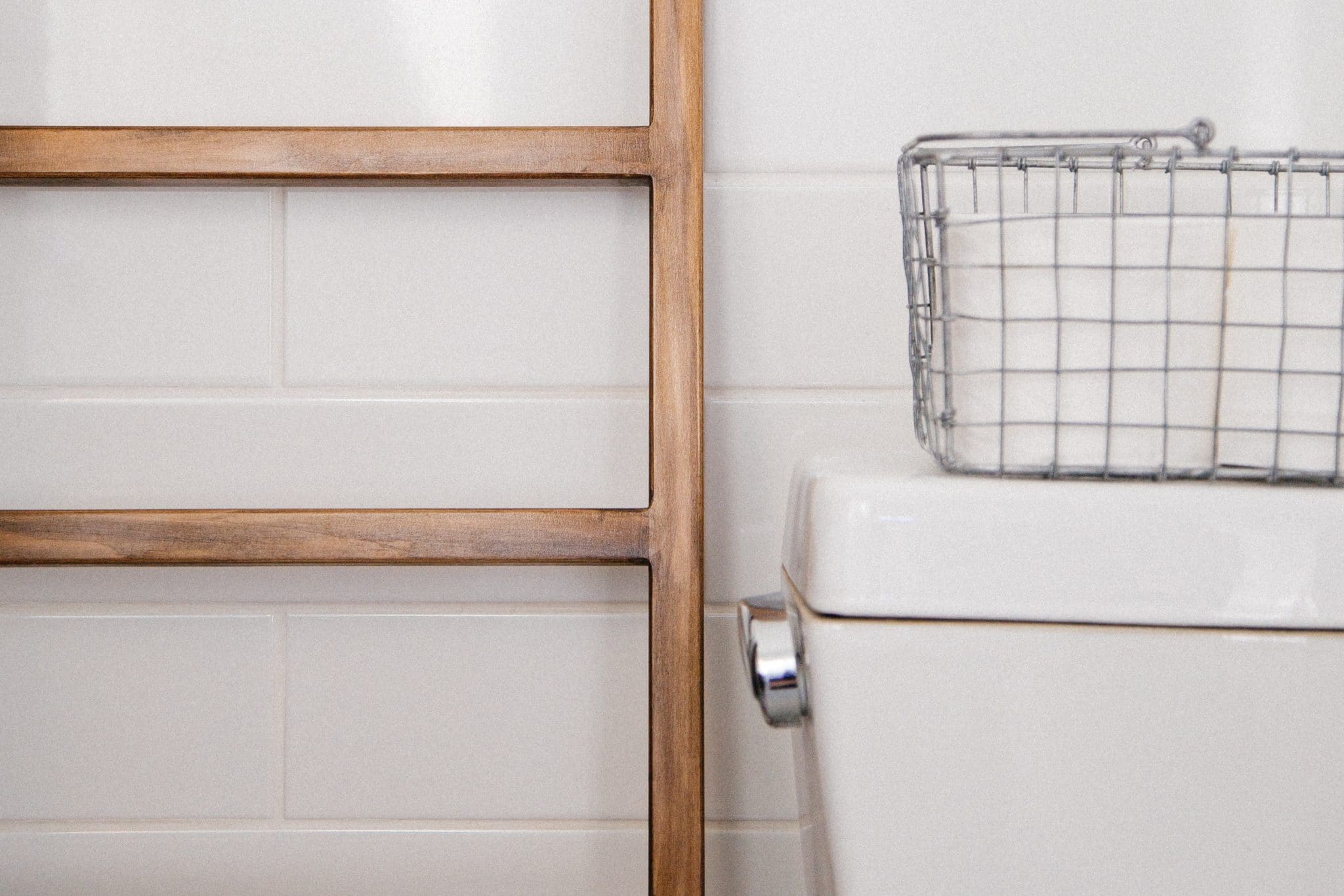Top E&O Claims Claim 2: Roof Damage
Last Updated November 8, 2023
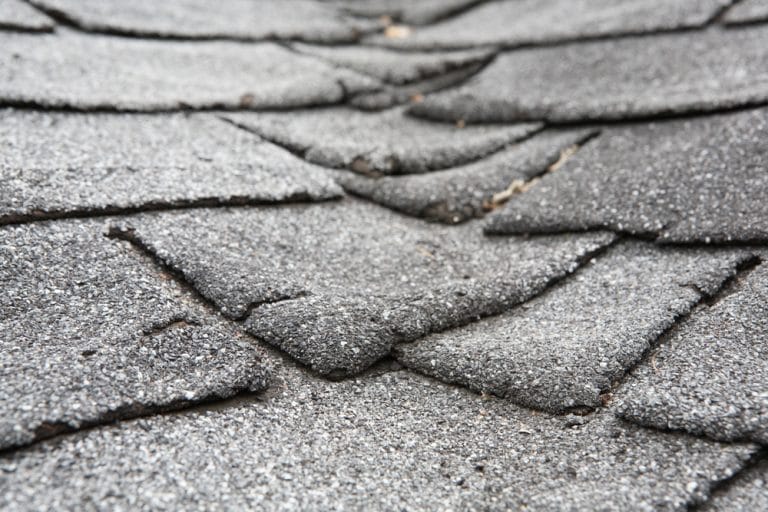
 Second only to general water damage claims, roof damage claims—especially ones alleging roof leaks—are one of the most common claims against home inspectors.
Second only to general water damage claims, roof damage claims—especially ones alleging roof leaks—are one of the most common claims against home inspectors.
Why is roof damage common?
Depending on its material, a typical roof lasts from 20 to 30 years before it needs to be replaced. However, it’s common for roofs to require regular maintenance due to normal wear and particularly after harsh weather.
From wind and rain to ice and debris, weather can lead to moisture penetrating the roof’s layers, which can cause leaks, mold, and wood rot. Faulty roof or flashing installation leaves the roof system more vulnerable to moisture damage because there’s an increased risk of punctures and pooling.
Some professionals recommend having a roof inspection once every two years to look for signs of needed maintenance. However, many homeowners aren’t so proactive, and they repair their roofs only after a problem, such as a leak, manifests.
Where is roof damage common?
Finding where roof damage may occur or where it already exists begins with knowing where to look. Here are a few of the common problem areas:
Roof Penetrations and Flashing
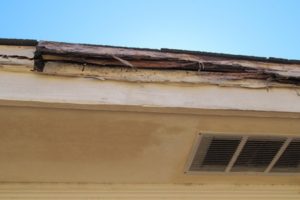 Although flashing details vary with type of penetration and roofing material, it is essential to have proper flashing to keep water out of the roof and the home.
Although flashing details vary with type of penetration and roofing material, it is essential to have proper flashing to keep water out of the roof and the home.
Some common ways roof penetrations and flashing issues conducive to water intrusion manifest during an inspection include:
- unsealed toe board holes
- incorrectly installed counter-flashing
- gaps beneath the flashing
- cracked sealant
- continuous, one-piece flashing
- sealant where sidewall flashing is missing
Flat Roofs
According to an article by Secure Restoration, because flat roofs lack slopes that encourage water to run off the surface, water pooling and subsequent damage can occur. Debris buildup can cause the roof to collapse inward, exacerbating a water pooling issue. Cold weather, too, can cause ice dams that trap moisture in place. Such circumstances may lead to water damage or leaks, both on the exterior roof and on the internal ceiling.
Gutters
Secure Restoration also suggests that gutters can suffer from debris or ice buildup that can lead to water damage. When gutters clog, water can’t navigate down and out as it should, leading the water to escape over the gutters’ edges and down the side of the house. Wet walls and buildup at the home’s base can lead to water intrusion, basement leaks, and mold.
What can inspectors do?
As with all claims prevention, it’s important to have a thorough pre-inspection agreement and inspection report (with pictures!). In addition, there are some specific ways to avoid roof damage claims.
Inspection Methods
Here are some of the things fellow home inspectors recommend you look for:
- Look for worn, broken, or missing shingles. Try to spot loose nails and poorly sealed roof flashing.
- Wetness along the framing members in the attic will help you find where leaks may be entering the house. Attics can also reveal signs of a roof leak faster than the exterior of the house.
- Note any areas on the ceiling or roof that look discolored, stained, swollen, or moist.
- Be sure to note the condition of the roof on the day of inspection and how that condition may change with weather.
In addition, you may want to consider using technology, such as an infrared camera, a moisture meter, and a drone, to augment your ability to spot a roof leak. Just be sure that you have the proper general liability insurance coverage in place to operate a drone before you start.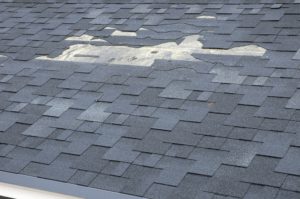
Obtain Insurance
After establishing that there’s roof damage, it’s important to communicate your findings to the client well. Inspectors recommend emphasizing the limitations of an inspection and explaining your findings in terms the client can understand.
Protection from roof damage claims.
Even if you do everything right, you can still get a roof damage claim. That’s why it’s essential for home inspectors to carry errors & omissions insurance (E&O) for defense and payout help. Contact your InspectorPro broker or submit an application with us to receive a home inspection insurance quote at no obligation.
Up Next: Foundation Claims.
Previously: Water Damage Claims.
The ASHI Reporter published this article in October 2018. See how this story appears in print below.
